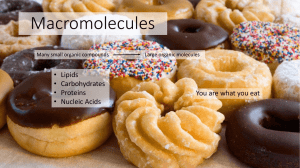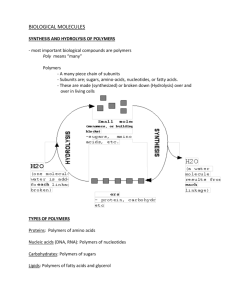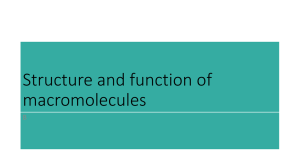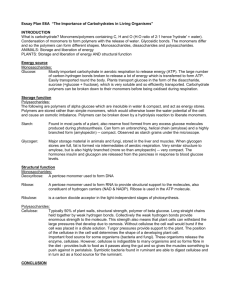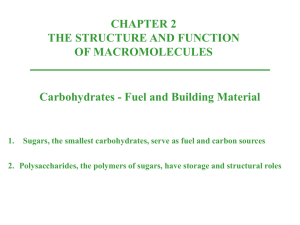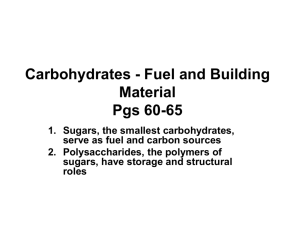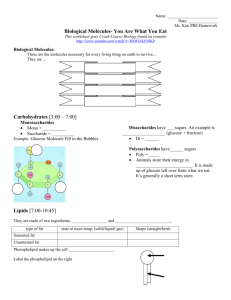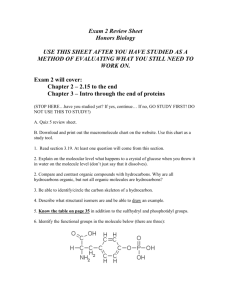AP Biology Notes Macromolecule Biological macromolecules
advertisement
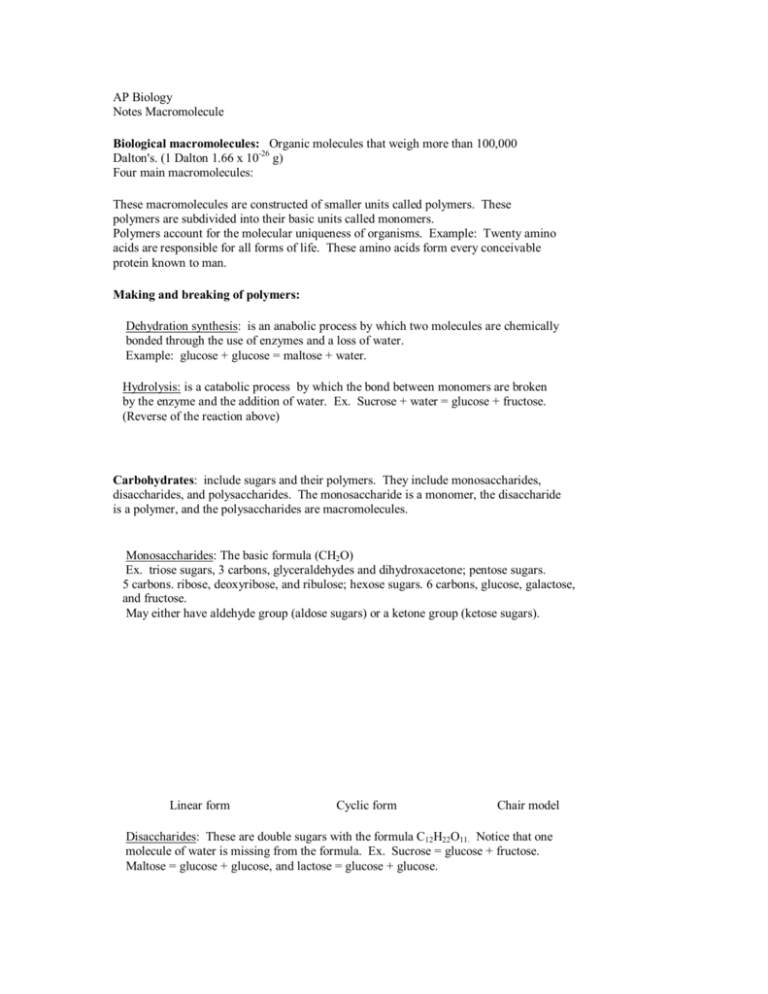
AP Biology Notes Macromolecule Biological macromolecules: Organic molecules that weigh more than 100,000 Dalton's. (1 Dalton 1.66 x 10 ­26 g) Four main macromolecules: These macromolecules are constructed of smaller units called polymers. These polymers are subdivided into their basic units called monomers. Polymers account for the molecular uniqueness of organisms. Example: Twenty amino acids are responsible for all forms of life. These amino acids form every conceivable protein known to man. Making and breaking of polymers: Dehydration synthesis: is an anabolic process by which two molecules are chemically bonded through the use of enzymes and a loss of water. Example: glucose + glucose = maltose + water. Hydrolysis: is a catabolic process by which the bond between monomers are broken by the enzyme and the addition of water. Ex. Sucrose + water = glucose + fructose. (Reverse of the reaction above) Carbohydrates: include sugars and their polymers. They include monosaccharides, disaccharides, and polysaccharides. The monosaccharide is a monomer, the disaccharide is a polymer, and the polysaccharides are macromolecules. Monosaccharides: The basic formula (CH2O) Ex. triose sugars, 3 carbons, glyceraldehydes and dihydroxacetone; pentose sugars. 5 carbons. ribose, deoxyribose, and ribulose; hexose sugars. 6 carbons, glucose, galactose, and fructose. May either have aldehyde group (aldose sugars) or a ketone group (ketose sugars). Linear form Cyclic form Chair model Disaccharides: These are double sugars with the formula C12H22O11. Notice that one molecule of water is missing from the formula. Ex. Sucrose = glucose + fructose. Maltose = glucose + glucose, and lactose = glucose + glucose. Polysaccharides: The basic formula is (C6H10O5)n. These are macromolecules capable of acting as structural or storage molecules. Storage Polysaccharides: Starch is a plant storage polysaccharide that is composed entirely of glucose joined by alpha 1­4 glycoside linkages. Amylose is the simplest form of starch. Amylopectin is more complex and is branched. Glycogen is an animal starch stored in the liver and muscles of vertebrates. It is more highly branched than amylopectin. Structural Polysaccharides: Cellulose and chitin are examples of structural polysaccharides. Cellulose is the most abundant organic compound on earth. It is made of glucose, like starch but they differ in the type 1­4 linkage. Instead of an alpha linkage as in starch cellulose contains a beta 1­4 linkage. This causes the polysaccharide to take on a step arrangement and not a linear one like in starch. Enzymes find it difficult to brake the B 1­4 linkage.
